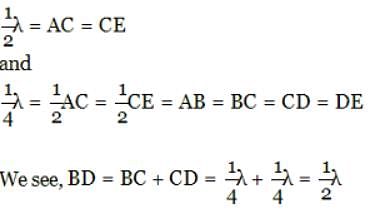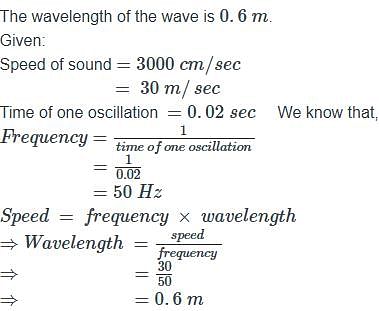UPSC Exam > UPSC Tests > MCQ : Sound - 2 - UPSC MCQ
MCQ : Sound - 2 - UPSC MCQ
Test Description
15 Questions MCQ Test - MCQ : Sound - 2
MCQ : Sound - 2 for UPSC 2024 is part of UPSC preparation. The MCQ : Sound - 2 questions and answers have been prepared
according to the UPSC exam syllabus.The MCQ : Sound - 2 MCQs are made for UPSC 2024 Exam.
Find important definitions, questions, notes, meanings, examples, exercises, MCQs and online tests for MCQ : Sound - 2 below.
Solutions of MCQ : Sound - 2 questions in English are available as part of our course for UPSC & MCQ : Sound - 2 solutions in
Hindi for UPSC course.
Download more important topics, notes, lectures and mock test series for UPSC Exam by signing up for free. Attempt MCQ : Sound - 2 | 15 questions in 20 minutes | Mock test for UPSC preparation | Free important questions MCQ to study for UPSC Exam | Download free PDF with solutions
MCQ : Sound - 2 - Question 1
A key of a mechanical piano struck gently and then struck again but mush harder this time. In the second case
Detailed Solution for MCQ : Sound - 2 - Question 1
MCQ : Sound - 2 - Question 2
Sound takes 2 seconds to travel 3 kilometres in water. What is the speed of sound in water?
Detailed Solution for MCQ : Sound - 2 - Question 2
| 1 Crore+ students have signed up on EduRev. Have you? Download the App |
Detailed Solution for MCQ : Sound - 2 - Question 3
Detailed Solution for MCQ : Sound - 2 - Question 4
Detailed Solution for MCQ : Sound - 2 - Question 5
Detailed Solution for MCQ : Sound - 2 - Question 6
MCQ : Sound - 2 - Question 7
Earthquake produces which kind of sound before the main shock wave begins
Detailed Solution for MCQ : Sound - 2 - Question 7
Detailed Solution for MCQ : Sound - 2 - Question 8
MCQ : Sound - 2 - Question 9
Echo is not heard in a room of 10 m x 10 in x 10 m dimension due to (speed of sound in air = 300 m/s)
Detailed Solution for MCQ : Sound - 2 - Question 9
MCQ : Sound - 2 - Question 10
The instruments Megaphone, Stethoscope, Hearing aids and Sound boards work based on the principle of
Detailed Solution for MCQ : Sound - 2 - Question 10
Detailed Solution for MCQ : Sound - 2 - Question 11
Detailed Solution for MCQ : Sound - 2 - Question 12
Detailed Solution for MCQ : Sound - 2 - Question 13
Detailed Solution for MCQ : Sound - 2 - Question 14
MCQ : Sound - 2 - Question 15
To hear a distinct echo, the minimum distance between the source of sound and the reflecting surface must be:
Detailed Solution for MCQ : Sound - 2 - Question 15
Information about MCQ : Sound - 2 Page
In this test you can find the Exam questions for MCQ : Sound - 2 solved & explained in the simplest way possible.
Besides giving Questions and answers for MCQ : Sound - 2, EduRev gives you an ample number of Online tests for practice
Download as PDF





















